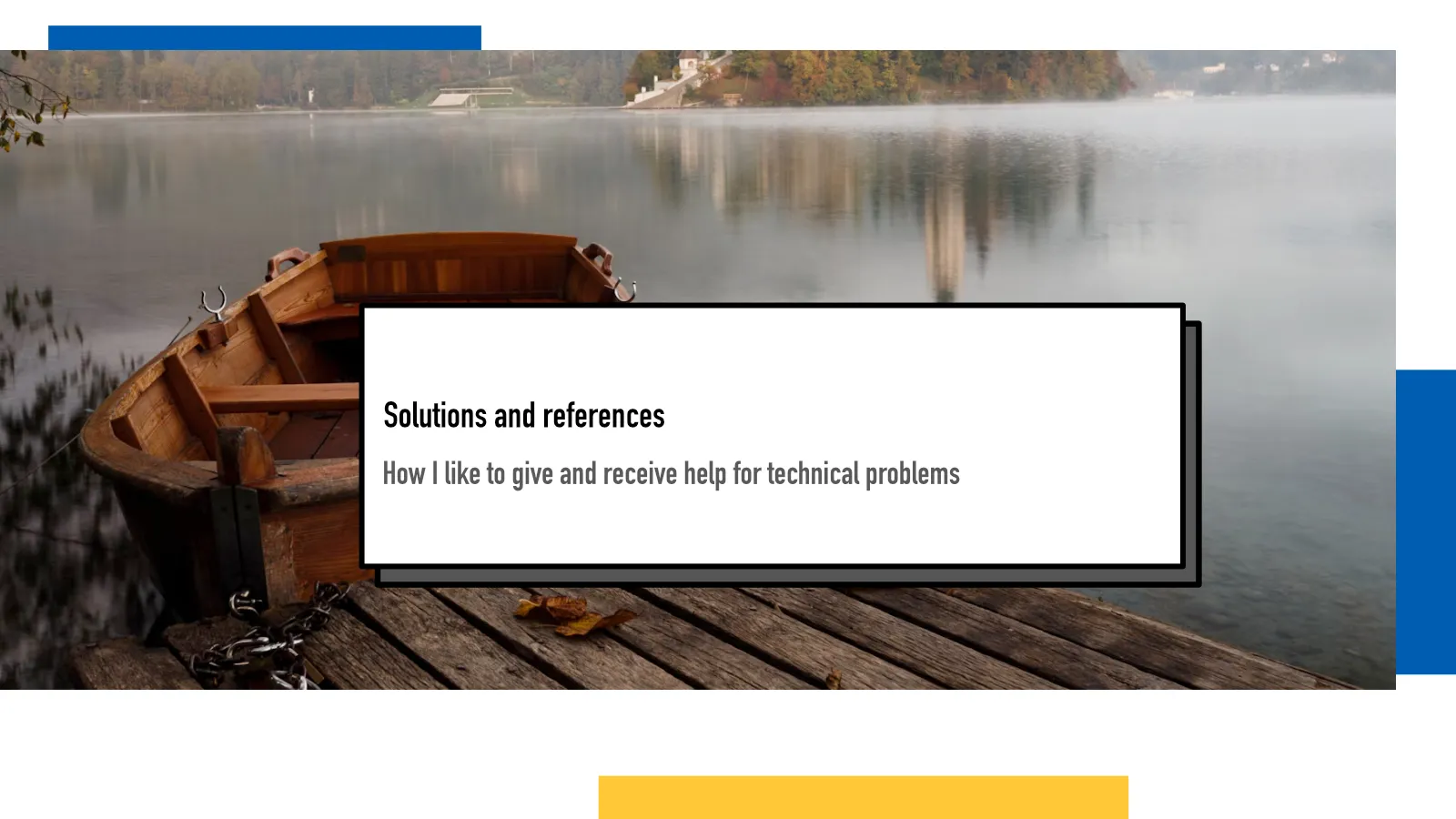Solutions and references

When someone asks for help — in my case usually in technical context — there are a couple of ways one can help.
Solution and references
The quick way is to provide a direct answer. A command to be run or a code snippet to be copy-pasted that solves the problem at hand. Quite often, that’s the first order of business people also want when they ask for help.
Technology is complex though. No matter how well we craft the question to a minimal example, the provided quick solution might not always be the exact solution in the real use case. This can lead to quite a bit of back and forth and can lead to a bit of an XY problem.
Even if it does solve the problem at hand, I personally prefer adding the references. A link to a relevant documentation or a blog post goes a long way to help someone not only solve their problem at hand but to learn why and how to solve relevant, slightly different problems.
It also helps the person asking the question to double check what the provided solution is based on. Especially in the current time of untested AI slop solutions provided, it’s nice to be able to see if the solution even exists or if it solves the right problem before diving deep into a rabbit hole of debugging a bad solution proposal.
I find this kind of “solution and references” approach very good for practical problems. It’s especially great if the questions happen in public forums: online forums, chat rooms etc (anything that’s not a private DM). The reference part helps everyone else following the discussion to learn more and can potentially avoid them having to ask a similar question later because they can find the documentation from an earlier discussion.
Show how to figure it out
A different approach is usually needed when the context is learning. Providing a copy-pasteable solution is usually not very beneficial to someone who is trying to learn something. It provides a shortcut that lets them avoid thinking about it and it stops them from learning how to solve similar issues later.
In learning context, a “show how to figure it out” is much better approach. Providing the references is a good extra but often helping the person to learn how they can in the future learn similar things is the long-term solution that benefits both sides.
When I was in my first proper developer job at Chartio, I still remember how I needed help figuring out how to implement a feature or fix a bug and our CTO Justin at the time sat next to me and guided me through how to find out where things happen in our codebase by starting from the browser and showing me how to learn through Network tab which API endpoints are called and how I can follow the right backend path through Django’s routes. It was such an invaluable lesson that I still cherish very warmly.
It would have been easy for him to show me the file and the function but I would have been in the same situation the next time a different thing needed fixing. Instead, by teaching me how to follow the breadcrumbs and the flow of requests and function calls, he gave me the tools to solve future problems on my own.
To find out which approach is appropriate, simply ask the person asking for help what they’d like to see. Sometimes, even when it would be better in the long run to learn from the first principles, there might be a tight schedule or stressful situation and a direct solution is appreciated. There’s always time to follow up on more educational approach once the fires have been put out if that’s the case.
If something above resonated with you, let's start a discussion about it! Email me at juhamattisantala at gmail dot com and share your thoughts. In 2025, I want to have more deeper discussions with people from around the world and I'd love if you'd be part of that.